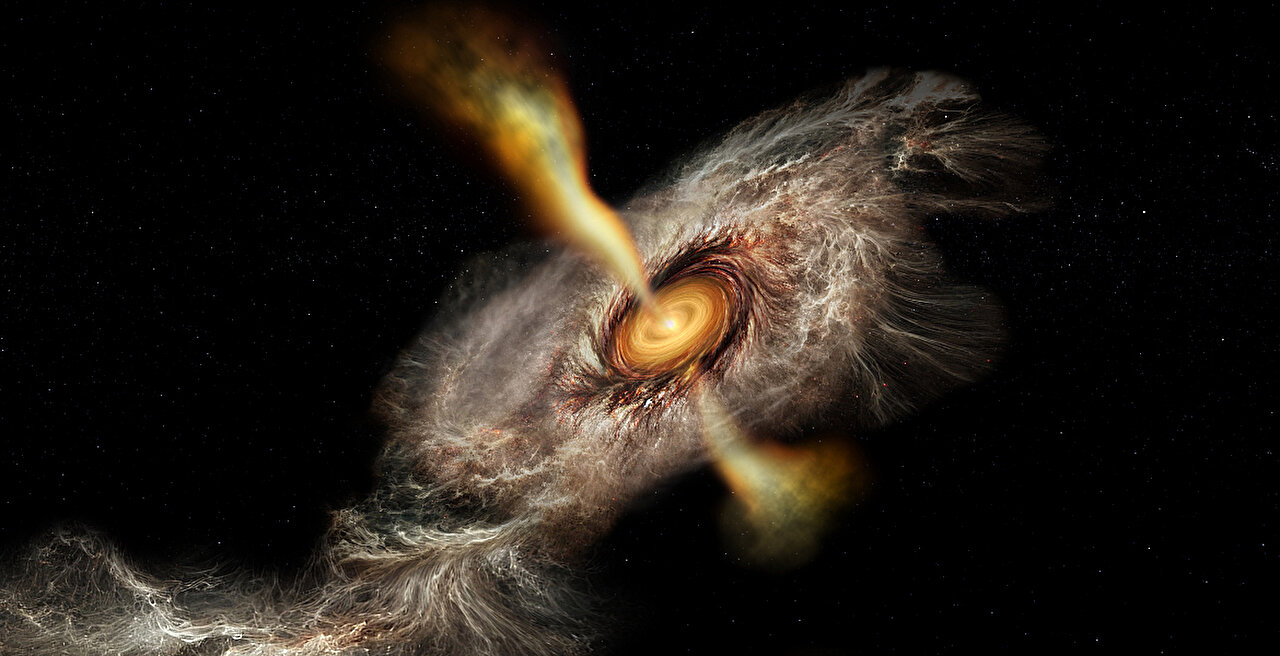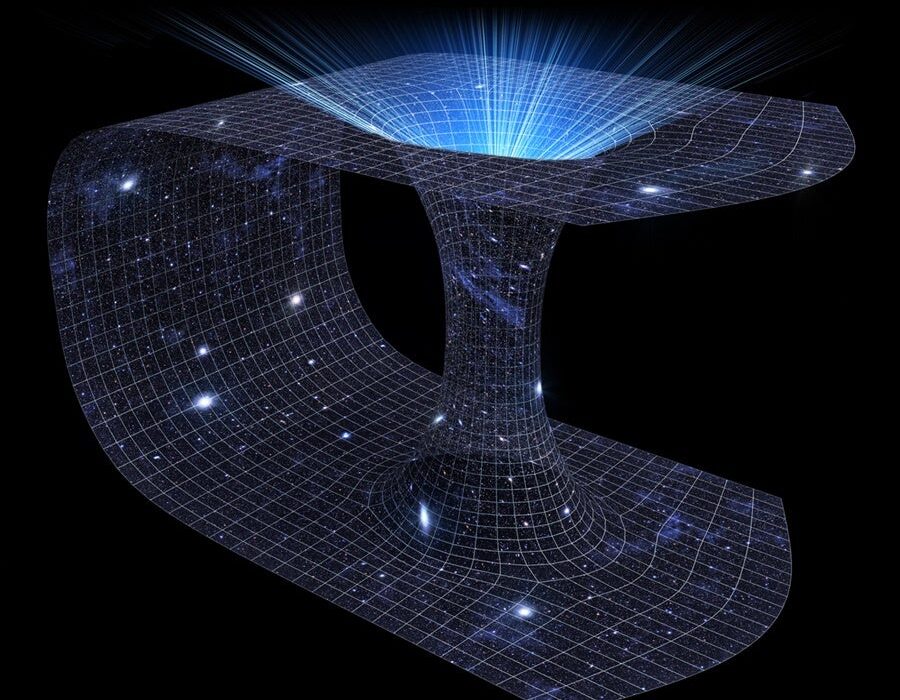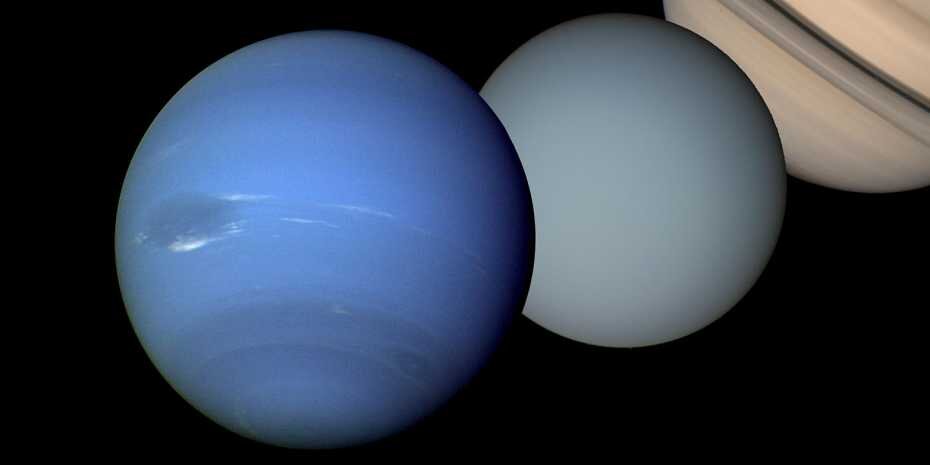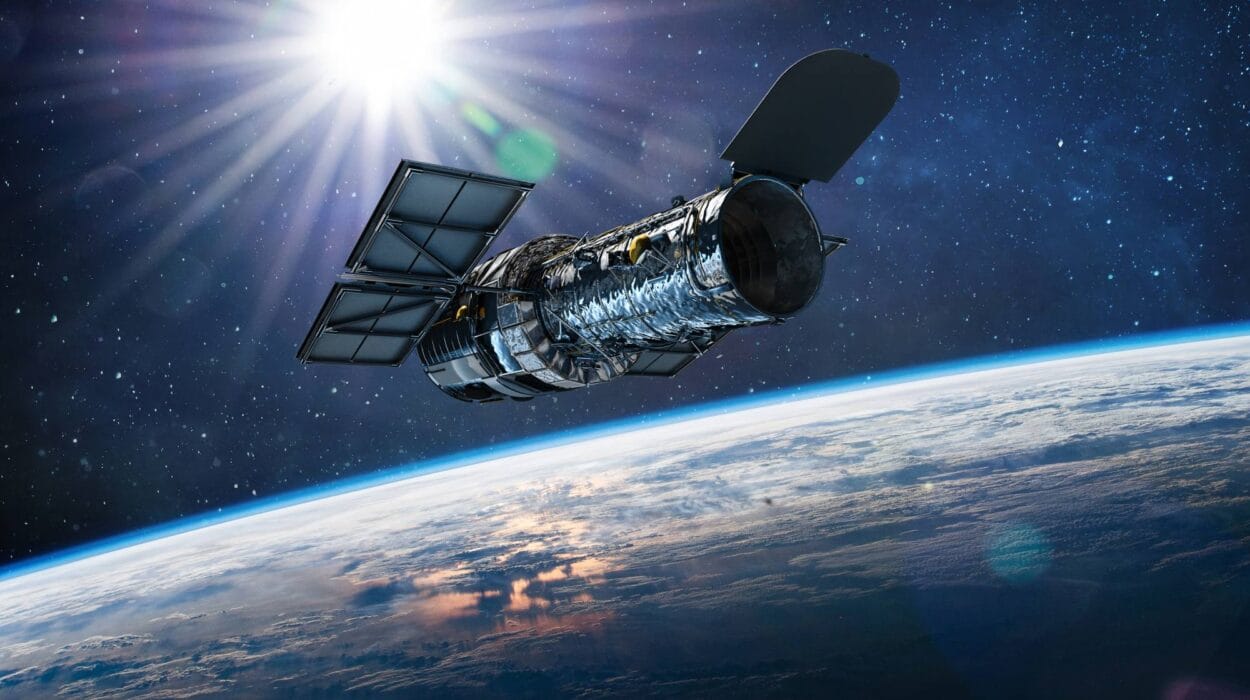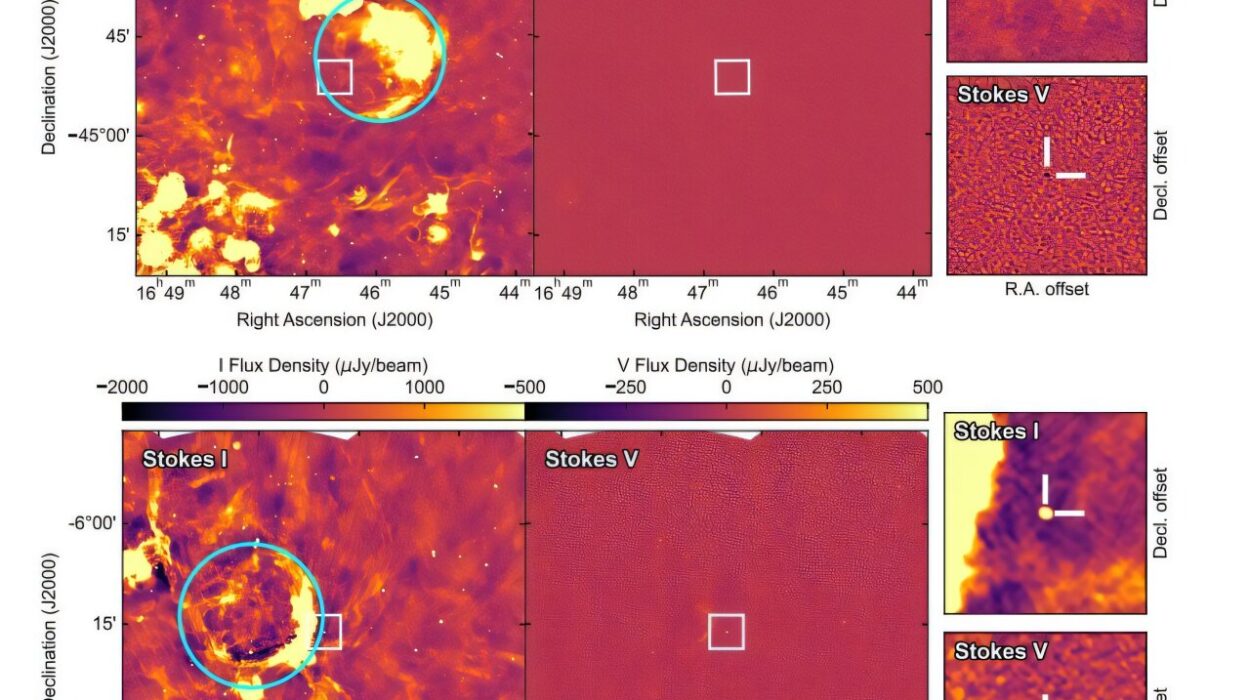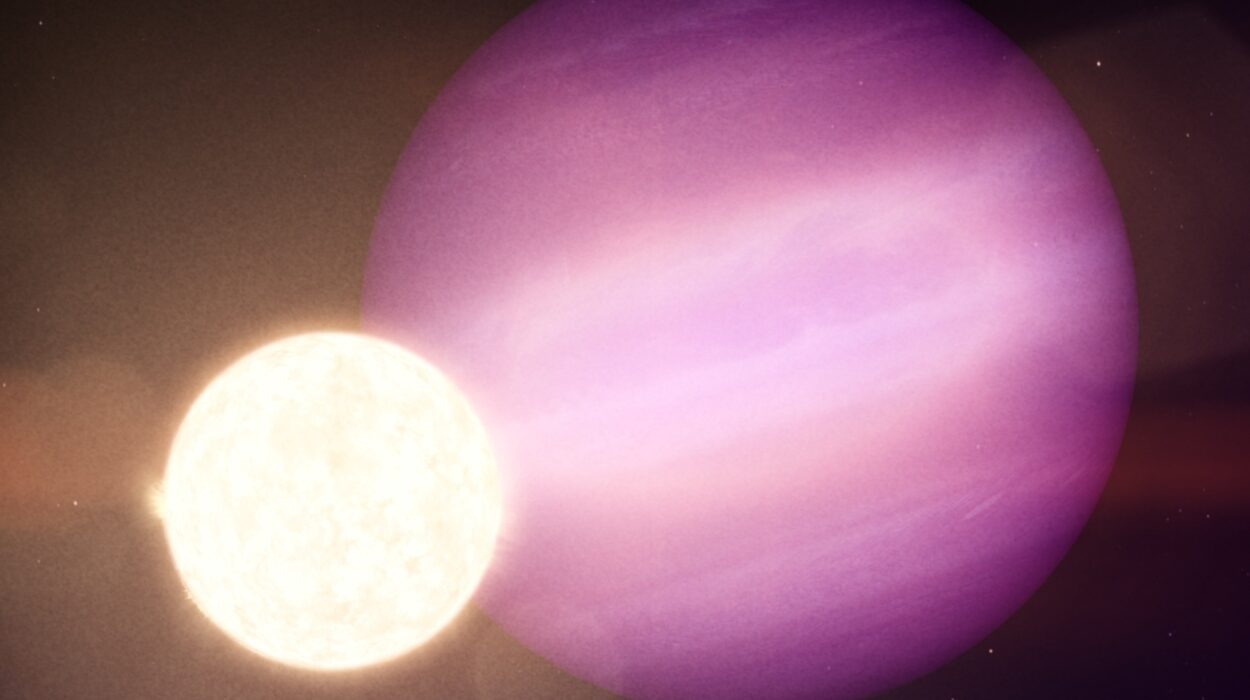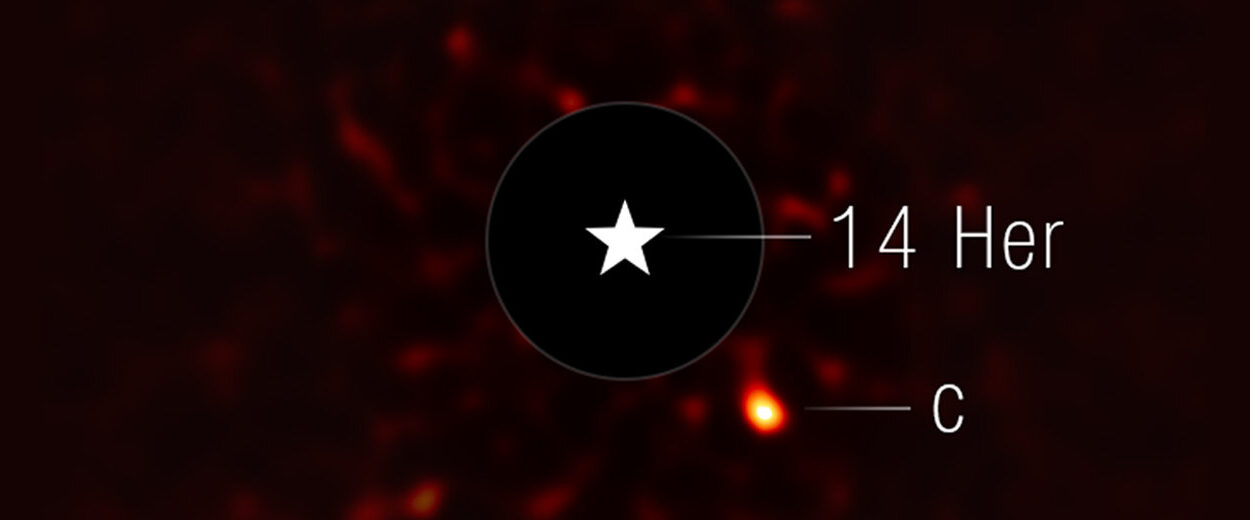Deep in the constellation of Cepheus, a hidden drama has been unfolding for eons—a celestial birth of astonishing proportions. Using the National Science Foundation’s Karl G. Jansky Very Large Array (VLA), astronomers have peered into the heart of this cosmic nursery and made an electrifying discovery. For the first time, they have resolved the swirling flow of gas feeding a massive young star in the making—HW2—offering a direct glimpse into how such colossal stars grow so rapidly.
At 2,300 light-years from Earth, Cepheus A is one of the nearest massive star-forming regions, a prized cosmic laboratory for probing stellar genesis. In the heart of this region lies HW2, a young protostar already boasting 16 times the mass of our Sun. It is a stellar behemoth still in the making—and now, scientists have untangled the secret of its formidable growth.
A Disk of Destiny: Tracing the Ammonia Trail
To unlock the mystery of HW2’s growth, astronomers turned to an unlikely hero: ammonia (NH₃), a molecule more commonly associated with household cleaners and fertilizer plants than interstellar physics. Yet in space, ammonia serves as a brilliant tracer of warm, dense gas—the lifeblood of star formation.
The team focused the ultra-sensitive eyes of the VLA on specific ammonia transitions excited at temperatures above 100 Kelvin (about -173°C). These are the warm environments where massive stars like HW2 gather their bulk. The VLA, operating at centimeter wavelengths, sliced through the veils of dust and gas cloaking HW2, revealing a dense, rotating ring of hot ammonia gas extending from 200 to 700 astronomical units (AU) from the star—a region over ten times the width of our entire solar system.
What they found was stunning: the ammonia-rich gas wasn’t just sitting idly—it was collapsing inward and spinning around the young star in an organized dance, unmistakably forming a rotating accretion disk.
Feeding the Beast: A Record-Breaking Infall
The real revelation lay in the dynamics of this disk. Gas wasn’t merely rotating—it was plunging inward toward the star at an astonishing rate: two thousandths of a solar mass per year. That may sound small, but in astrophysical terms, it’s an extreme torrent—one of the highest accretion rates ever observed around a forming massive star.
“This is direct evidence that even stars destined to become cosmic giants can grow through accretion disks,” said Dr. Alberto Sanna, the study’s lead author. “And thanks to the unmatched sensitivity of the VLA, we can now see the feeding process unfolding on scales of just 100 AU.”
This is not just a technical milestone—it’s a conceptual one. For decades, astronomers debated whether massive stars could even form via disks. Unlike their low-mass siblings, which grow methodically through disk-fed accretion, massive stars have fierce radiation pressure that could, in theory, blow away incoming gas. Some models predicted that such stars must form through chaotic mergers or violent infall. But HW2 changes that narrative.
Simulations and Symphonies of Gas
To make sense of their observations, the astronomers turned to sophisticated computer simulations of massive star formation. Prof. André Oliva, who led the theoretical modeling, found that HW2’s ammonia disk behaved just as predicted by simulations: gas was falling inward at speeds close to gravitational free-fall while rotating below the speed needed to maintain stable orbits—a state called “sub-Keplerian” rotation.
This delicate balance, dictated by gravity and centrifugal force, is exactly what theory demands for disk-mediated accretion. In essence, HW2’s environment confirms that nature follows the script physicists have been developing for years.
Yet even more intriguing was the asymmetry within the disk. One side appeared more turbulent and lopsided, as if a celestial hand was stirring the pot from the outside. The researchers suspect that “streamers”—external flows of gas from surrounding clouds—are funneling fresh material into the disk, replenishing it and sustaining the star’s growth. These streamers, glimpsed in other star-forming regions like Orion KL and W51, may be a vital, overlooked ingredient in the formation of massive stars.
A Star That Continues to Inspire
“HW2 has been on our radar for more than four decades,” said Prof. José María Torrelles, who made pioneering observations of the region in the 1990s. “And it still surprises us.” What was once a mysterious, barely resolved radio source is now a vibrant laboratory for understanding the cosmic processes that forge the giants of our galaxy.
Indeed, HW2 is more than a curiosity—it’s a cornerstone. By deciphering its anatomy, astronomers can test theories about how massive stars ignite nuclear fusion, influence their birth environments, and eventually die in titanic supernovae, scattering heavy elements across the galaxy.
Massive stars are not just cosmic showstoppers. They are the architects of the universe’s chemical complexity. Their deaths seed interstellar space with carbon, oxygen, iron, and other elements vital for planets—and life. Understanding how they are born is to understand the conditions that ultimately lead to the emergence of galaxies, solar systems, and perhaps even us.
The Power of Radio Eyes
The success of this research hinges on the power of radio interferometry—specifically, the NSF’s Very Large Array. This instrument links 27 radio antennas across the New Mexico desert to create a telescope with the resolving power of an 18-mile-wide dish. At centimeter wavelengths, it can pierce through the dense shrouds of dust that obscure the hearts of stellar nurseries—regions that optical telescopes simply cannot penetrate.
“Only the VLA, with its high sensitivity and spatial resolution at these wavelengths, could have made this possible,” said Dr. Todd Hunter of the NRAO. “And with the planned Next Generation VLA coming online in the next decade, we’ll be able to zoom in on star-forming disks at solar-system scales.”
Imagine being able to watch the formation of a star and its planetary system in real time and detail comparable to observing Saturn’s rings from Earth. That is the future promised by next-generation radio astronomy—and HW2 is the preview.
A Universe Rewritten in Gas and Dust
This discovery represents more than just an observational feat. It is a profound affirmation that nature’s processes are scalable. From tiny, Sun-like stars to colossal stellar titans like HW2, accretion disks are the common denominator. The universe, in its chaotic elegance, reuses the same mechanisms to build vastly different objects.
For decades, the formation of massive stars remained a vexing puzzle. Their extreme radiation, powerful winds, and short lifespans made them hard to catch in the act. But now, by tuning into the whispering radio frequencies of ammonia gas, astronomers have caught a massive star red-handed—devouring material in a disciplined, disk-like manner.
The Ripple Effects Across Astrophysics
The implications stretch far beyond HW2 or even star formation. By proving that massive stars grow via accretion disks, this research touches on galaxy evolution, black hole formation, and the enrichment of the interstellar medium. The same dynamics may be mirrored in the violent cores of galaxies, where supermassive black holes are thought to grow through similar processes.
Moreover, by refining our understanding of high-mass star formation, scientists can improve simulations of galaxy-scale events and cosmic feedback—how stars shape the gas and dust that eventually give rise to new stars and planetary systems. This ripple effect of understanding is the hallmark of transformative science.
Final Thoughts: A Star Is Born, and So Is Knowledge
In the end, the story of HW2 is not just about a star. It’s about humanity’s relentless pursuit to understand the cosmos. Through a symphony of molecules, radio waves, and computational models, scientists have opened a new window onto the birth of the universe’s most influential players.
This discovery is a testament to the power of curiosity, technology, and cooperation across institutions and continents. It shows that even after 40 years, the universe still holds surprises for those willing to listen closely—and that the birth of a star can light the way to whole new realms of knowledge.
The next time you look up at the night sky, remember: somewhere in the constellation Cepheus, a star is still growing, still gathering strength, still unfolding its fiery wings. And thanks to a molecule of ammonia and a few giant antennas in the New Mexico desert, we now know just how extraordinary that process really is.
Reference: A. Sanna et al, Gas infall via accretion disk feeding Cepheus A HW2, Astronomy & Astrophysics (2025). DOI: 10.1051/0004-6361/202450330. On arXiv DOI: 10.48550/arxiv.2502.15070
